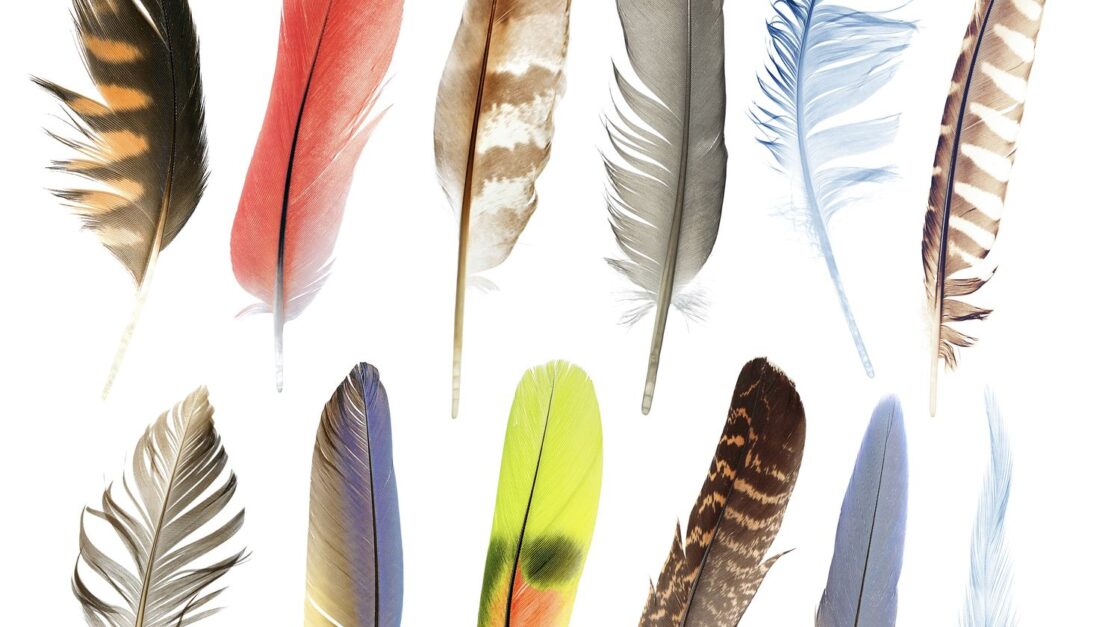Take a moment and think about the stories that have stayed with you long after you finished the last page—the ones that have burrowed into your mind, your heart, or your soul, continuing to occupy space. While I can’t guess the specific stories that are living rent-free in your mind, I’ll wager that they’re not lingering because of their creative plot twists or cliffhangers. More likely, it’s because they made you feel something deeper—something you couldn’t quite put your finger on at first. Often, this deeper resonance is due to the use of symbolism. Symbolism is one of those storytelling tools that, when used well, has the power to elevate a narrative from simply good to profoundly meaningful.
When I think about the books that have moved me the most, it’s not just the engaging characters or enthralling plots that come to mind. It’s the recurring images, the small but significant details that, at first glance, might seem inconsequential, but gradually reveal themselves to be key to understanding the story on a deeper level. Whether it’s a green light on a dock, a red letter on a dress, or even something as simple as a bird, symbols can transform a narrative into something that resonates long after the story is over.
At its essence, symbolism involves using an object, character, setting, or even a color to represent something beyond its literal meaning. Think of it as a layer of subtext that adds richness to the narrative. For example, the green light in F. Scott Fitzgerald’s The Great Gatsby might seem like just a distant beacon at first, but it gradually becomes a symbol of Gatsby’s unattainable dreams and the elusive nature of the American Dream.
One of the most effective uses of symbolism is to create thematic unity throughout a story. A well-chosen symbol can act as a thread that ties together various plotlines, character arcs, and themes, providing a sense of cohesion and purpose. One of my favorite examples of this can be found in Nathaniel Hawthorne’s The Scarlet Letter. The scarlet letter “A” isn’t just a mark of Hester Prynne’s sin; it’s a powerful symbol of the novel’s broader themes of guilt, redemption, and societal judgment. Its recurring presence throughout the story helps to unify the narrative and deepen its thematic impact.
When writers use symbols in this way, they’re inviting readers to look beyond the surface and consider the underlying message or meaning of the story. This approach is particularly effective in stories with complex themes or multiple layers of meaning, where symbols can help to ground the narrative and guide the reader through the story.
Beyond creating thematic unity, symbolism can also add emotional depth, allowing readers to connect with the story on a more profound level. A well-crafted symbol resonates emotionally, evoking feelings that might be difficult to express directly. The emotional impact of a symbol often grows as it recurs throughout a story. As readers encounter the symbol repeatedly, it gathers significance, deepening their emotional engagement. However, it’s crucial for writers to strike a balance; overusing a symbol can dilute its power and make it feel forced. The goal is to use symbolism in a way that feels natural and integral to the story’s emotional arc.
When I was in high school, I remember sitting in English class, rolling my eyes as we dissected yet another classic novel for its hidden meanings. At the time, it seemed like every little detail was imbued with some grand symbolic significance—details that, to my teenage mind, were probably just there by coincidence. Did Fitzgerald really mean for the green light to symbolize Gatsby’s unreachable dreams? Was Hawthorne actually thinking about sin and redemption when he described that letter “A”? I was suspicious that my teachers were making up these hidden meanings, attributing intentional symbolism to things that the authors themselves might not have considered. Did everything have to mean something?
The joke was on me years later when I became a high school English teacher. By then, I had fallen in love with writing and willingly studied story structure. Along the way, I realized symbols often do emerge intentionally, but just as often, they arise organically as the story unfolds. Writers might start with a vague idea, but as they explore their characters and themes, certain objects, animals, or settings take on additional meaning.
So, when should you start thinking about symbolism in your writing? Is it something to plan from the very beginning, or should it be woven in during the revision process? The answer can vary depending on your personal approach to writing.
For some writers, symbols emerge naturally as they draft their stories. A particular object or image might start to take on additional meaning as the narrative develops. In these cases, the symbolism can be refined and emphasized in later drafts, once the story’s themes and direction are clearer. Other writers might prefer to plan their symbols from the outset, using them as a way to explore and express the story’s central themes. This approach can be especially helpful when dealing with abstract or complex ideas that need to be grounded in something tangible.
Regardless of when you introduce symbols into your story, it’s important to remain flexible. A symbol that seems perfect in the planning stages might not fit as well once the narrative is fully developed, and new symbols might emerge organically during the writing process. Incorporating symbolism into your fiction is an art that requires a delicate balance of intention and intuition. The key is to let the story guide you, ensuring that any symbolism feels authentic and integral to the narrative rather than imposed.
When used effectively, symbolism can unify a story’s theme, build emotional depth, and create a more immersive reading experience. As you write your next story, consider how symbols can add layers of meaning and emotional resonance.
Read more about symbolism here: https://writers.com/what-is-symbolism-in-literature
Birds of a Feather? The Divergent Symbolism of Crows in Weyward and The Midnight Feast
As a reader, I often find myself immersed in multiple books at once, switching texts and genres throughout the day based on my mood. Recently, I found myself engrossed in both Weyward by Emilia Hart and The Midnight Feast by Lucy Foley. As I toggled between the two novels, I was struck by a surprising similarity: both stories prominently feature crows as symbolic elements. Birds, especially crows, have a long history of symbolic use in literature, often representing death, transformation, or omens. However, as I delved deeper into each narrative, I became intrigued by how differently these two authors employed the same symbol to serve their distinct thematic purposes.
In Weyward, Emilia Hart uses crows to symbolize the mystical connection between the Weyward women and the natural world. Throughout the novel, crows are portrayed as protectors and guides for the women, especially for Altha, Violet, and Kate, who are each connected by their lineage and their inherited abilities. The crows in this story are not just birds; they are representations of the Weyward women’s power, resilience, and connection to something greater than themselves.
Hart’s use of crows emphasizes the theme of female empowerment through a deep bond with nature. The birds serve as a reminder of the women’s inner strength and the ancient knowledge that runs through their bloodline. This symbolic use of crows creates an atmosphere where the natural world is both a source of wisdom and a force that the Weyward women can tap into, especially when they are faced with challenges or threats. In this way, the crows in Weyward reinforce the novel’s message about the strength that comes from embracing one’s heritage and the power inherent in being attuned to the natural world.
In contrast, Lucy Foley’s The Midnight Feast presents crows in a much darker light. Here, the crows are associated with death, foreboding, and the resurfacing of buried secrets. Foley uses the crows to symbolize the weight of guilt and the inevitable consequences of past actions. The presence of crows around The Manor, the luxurious but ominous setting of the novel, adds to the atmosphere of suspense and dread that permeates the story.
The crows in The Midnight Feast are linked to the occult group known as “the Birds,” which further enhances their association with death and sinister forces. Unlike in Weyward, where crows are protectors, the crows in Foley’s novel are harbingers of doom and consequences. Their appearance signals that something terrible is on the horizon, and they serve as a constant reminder of the darkness that lurks within the characters. This symbolic use of crows amplifies the novel’s themes of hidden sins and the inescapability of one’s troubled past.
The contrasting use of crows in these two novels deeply impacted my emotional engagement with their narratives. In Weyward, the crows contributed to my sense of empowerment and connection to nature, leading me to view the Weyward women’s journey as one of reclaiming their rightful place in the world. The symbolism added a layer of mysticism and reinforced the idea that true power comes from understanding and embracing one’s origins. This is a stark contrast to the same symbol in The Midnight Feast, where the crows heightened the tension for me and underscored the themes of guilt and retribution. I became acutely aware that the characters’ secrets were destined to surface, with devastating consequences. Foley’s use of crows as ominous symbols played into the novel’s dark, suspenseful tone, creating an atmosphere of impending disaster that kept me on edge.
Both Hart and Foley effectively use crows to enrich their narratives, but their different approaches to the symbol highlight the versatility of similar symbols in fiction. By carefully choosing what their crows represent, both authors shape the emotional and thematic impact of their stories, guiding readers through experiences that are distinct and deeply resonant. Whether as symbols of empowerment or doom, the crows in these novels reveal the power of symbolism in fiction to add depth and meaning that may linger in a reader’s mind long after they’ve closed the book.


Interesting, informative and inaightful
Thank you for sharing. 🙏
I love your writings and I really want to write like you